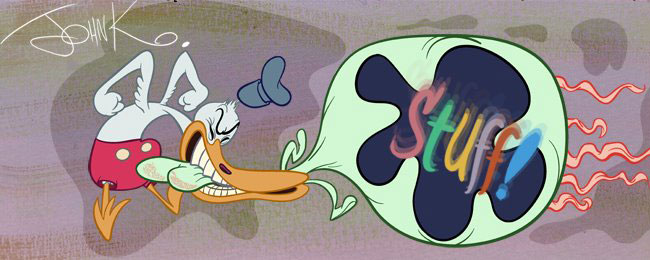 After studying the models I then also look at animators' drawings, storyboard drawings, toys and comic book or comic strip drawings too.
After studying the models I then also look at animators' drawings, storyboard drawings, toys and comic book or comic strip drawings too. I look for the most appealing incarnations of the characters and try to incorporate them all into my understanding of the charcters.
I look for the most appealing incarnations of the characters and try to incorporate them all into my understanding of the charcters. Here I tested myself to see what I remembered and understood about Huck. I got the angle at the top of his head backwards and will correct it next time I draw him from memory. (Hopefully) I remembered that his butt is lower than his belly - very important to his personality.
Here I tested myself to see what I remembered and understood about Huck. I got the angle at the top of his head backwards and will correct it next time I draw him from memory. (Hopefully) I remembered that his butt is lower than his belly - very important to his personality. Model sheets are only the jumping off point for characters. If you slavishly just try to imitate a handful of model sheet poses, you will inevitable lose a generation or more. Each good artist who adds poses and expressions to a character enriches the overall character and that's worth absorbing - and ultimately adding to yourself.
Model sheets are only the jumping off point for characters. If you slavishly just try to imitate a handful of model sheet poses, you will inevitable lose a generation or more. Each good artist who adds poses and expressions to a character enriches the overall character and that's worth absorbing - and ultimately adding to yourself.

After studying some early HB model sheets, story sketches and comic illustrations, I tried my hand at sketching some thumbnail gag ideas to see if I could get a grip on the character. Huck is very hard to caricature. He has too many subtle angles.

